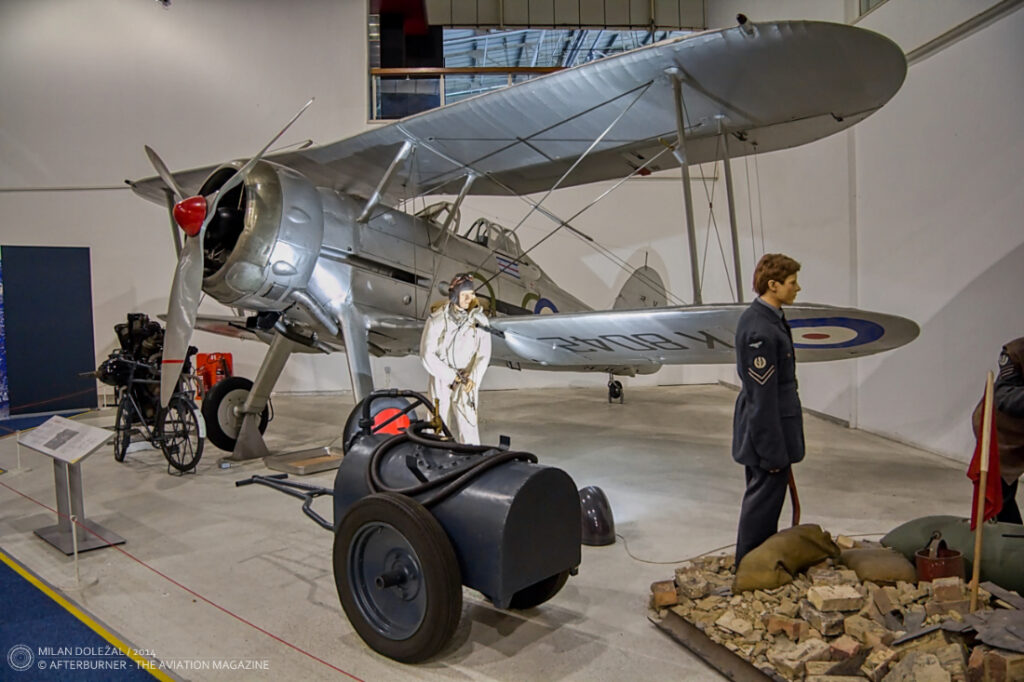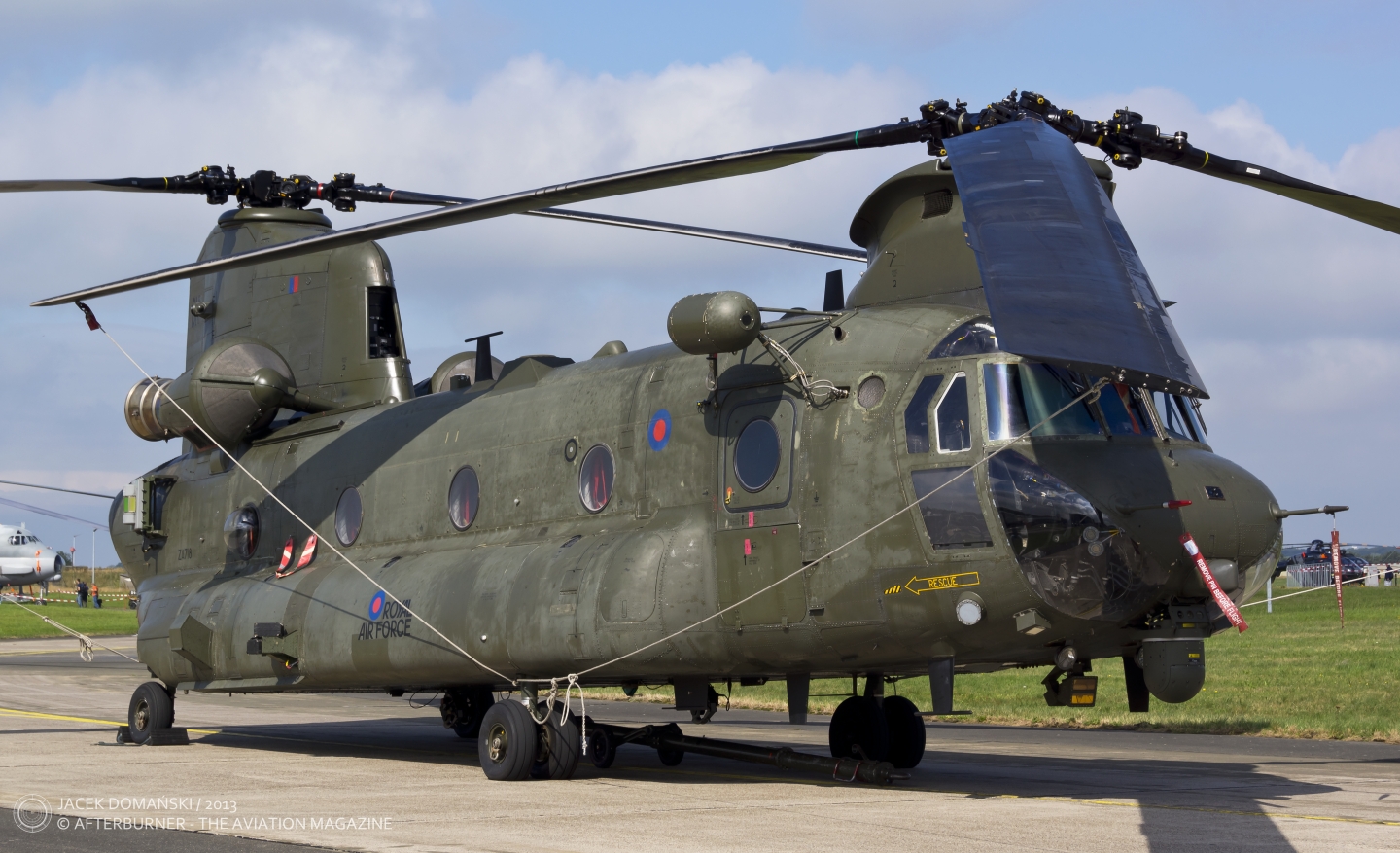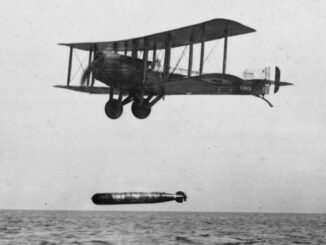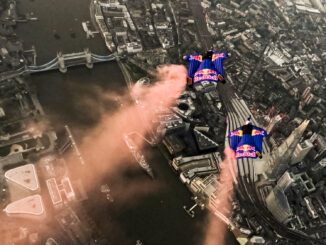 Gloster Gladiator Mk I (c/n 40468, formerly K8042 of the Royal Air Force), exhibited at the Royal Air Force Museum in Hendon, London, July 2014.
Gloster Gladiator Mk I (c/n 40468, formerly K8042 of the Royal Air Force), exhibited at the Royal Air Force Museum in Hendon, London, July 2014.
Developed by Gloster as a private company venture, the Gladiator became a quite popular fighter aircraft of the late 1930s. In the United Kingdom, the aeroplane served with the Royal Air Force and the Fleet Air Arm, as well as was acquired by several other counties all over the world. The Gladiator was one of the few biplanes that were actively used in combat during the World War II, as well as the last biplane fighter of the RAF.
At the time the Gladiator entered operational service, it was already clear that not biplanes but low-wing monoplane aircraft with retractable landing gear was the future of fighter aviation. Nevertheless, for many countries the Gladiator was a cheaper, less sophisticated and – most importantly – readily available alternative.
The dawn of new era in aviation was clearly represented in the Air Ministry specifications issued in the 1930s and related to new fighter aircraft. In 1930, the Air Ministry published its first Operational Requirement (OR), setting out the required characteristic, role and performance for a future fighter aircraft. The OR.1 was then reflected in F.7/30 specification for a new fighter aircraft that was responded by several aeroplane manufacturers. Majority of them still proposed a biplane (Blackburn F.3, Bristol Type 123, Hawker PV.3 and Westland F.7/30), although two aviation companies already offered low-wing monoplanes (Supermarine Type 224 and Bristol Type 133).
The Gloster company participated in the F.7/30 competition with modification of its previous SS.19 Gauntlet biplane. It went somewhat unnoticed, so the company continued development as a private venture. That p rototype was designated SS.37 and was an open-cockpit biplane, powered by Bristol Mercury IV radial engine of 530 hp and featured a cantilever fixed undercarriage.
On 12th September 1934, the SS.37 prototype performed its first flight. The aircraft performed well but was considered as underpowered. Therefore, the engine was quickly replaced by a more powerful powerplant – initially for the 645 hp Mercury VI S and then Mercury IX, of 840 hp.
Nevertheless, the Air Ministry was still quite sceptical about performance of the SS.37. The aircraft underwent an endless procedure of evaluation flights but without any final conclusion.
At the same time, the Air Ministry already focused on the low-wing monoplanes and issued new specification designated F.5/34. It was based on the OR.14 and included requirements for a single-seat modern fighter aircraft. In response to that specification, four aeroplanes were proposed (Bristol Type 146, Martin-Baker M.B.2, Vickers Type 279 Venom, Gloster F.5/34) but none of them was approved for serial production. The Air Ministry decided to wait for PV.12 (later known as the Hurricane), at that time being developed at Hawker, as a consequence of the refusal of the PV.3 from the F.7/30 competition.
However, while the Air Ministry was waiting for the low-wing monoplane interceptor, events in the world emerged in potential emergency situation. Following Hitler´s growing to power, Germany began with re-establishment of the country´s air force. Therefore, the case of the new fighter aircraft for the RAF became even more urgent.
In June of 1935, the SS.37 was approved for serial production, following new Specification F.14/35. Initial order for twenty-three examples of the aeroplane was placed and the fighter received its official designation – the Gladiator. Shortly after, Gloster received another order from the Air Ministry, this time for 180 examples of the aircraft. The first serial made Gladiators Mk I were delivered to the RAF in July of 1936. However, they became operational only in January of the next year.
Due to delays in development of the Hurricane, the Air Ministry decided to continue with production of the Gladiator as the backup for the Hawker´s project. In consequence, the follow-up order was placed at Gloster, for modified version of the biplane, Gladiator Mk II. At the same time, the Royal Navy ordered a naval variant of the fighter, designated Sea Gladiator and equipped with arrestor hook. In total, 483 Gladiators were acquired by the RAF and 98 by the Fleet Air Arm.
Finally, initially unwanted and then considered just as a stopgap, the Gladiator became – although for a very short time – the last operational British fighter biplane. The aircraft was operated by eight RAF squadrons and put on duty in the air defence of the British capital. The Gladiator fighters were for the first time used in combat at the end of 1938, by the RAF units deployed to the Middle East and fighting against the Arab revolt in Palestine.
As aforementioned, due to low availability of the modern low-wing monoplanes, the Gloster Gladiator was in many cases the only solution for the countries that – in the eve of the World War II – needed a rapid modernisation of their air forces. The aircraft was acquired, inter alia, by Belgium, China, Finland, Norway, Portugal, South Africa and Sweden.
Although, at the beginning of the war, the Gloster biplane was already an obsolete aircraft and was overperformed by most of the first-line monoplane fighters, the Gladiators seen action in almost all theatres of the World War II.
The RAF still flew with the Gladiators during the French, Norwegian and Greek campaigns, as well as in defence of Malta and over the Middle East. The aeroplane was also operationally used by Australia, China, Belgium, Norway, Finland, Greece and South Africa. One of the most interesting campaigns was the 1941 Anglo-Iraqi War, where both the RAF and the Royal Iraqi Air Forces used the Gladiator as their main fighter aircraft.
In addition, several Gladiator pilots received the ace status. Marmaduke ´Pat´ Pattle was the leading Gladiator ace with 15.5 confirmed victories, followed by William ´Cherry´ Vale and Joe P. Fraser who scored 10 and 9.5 victories, respectively. There were also the Gladiator aces in Finland and China.
The Gloster Gladiator K8042, being exhibited at the RAF Museum in Hendon, was manufactured as the Gladiator Mk I, following the second aforementioned order from September of 1935, for 180 examples of the fighter.
The aircraft was equipped with the Bristol Mercury VIIIA engine, generating 840 hp and mostly used with the Mk II series. It can be the reason why, in some publications, that Gladiator is mentioned as the Mk II – however the RAF Museum itself uses the Mk I designation.
The K8042 was not used in combat and from the very beginning the aeroplane was stored in reserve at No. 1 Aircraft Storage Unit. In the early 1940s, the Gladiator was transferred to research and training units of the RAF, where it was used as research aeroplane and a trainer. Its military career concluded in 1945, when the K8042 was retired from service and intended for display purposes.
During the following years, the Gladiator was from time to time exhibited at various purposes. In 1971, it finally became a part of aviation collection at the RAF Museum in Hendon.



